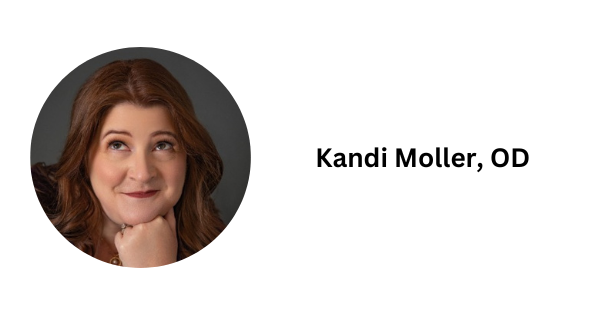
Albert Pang: My Journey into NeuroVisual Medicine and Binocular Vision Dysfunction
Albert Pang, an optometrist based in Texas, has seen it all in his career. From starting his practice in 1992 to witnessing the entire evolution of optometry, Albert’s passion for patient care has never wavered.
That passion burned when he saw a growing number of pediatric patients with mysterious visual symptoms—headaches, light sensitivity, trouble focusing—and it led him to something life-changing: NeuroVisual Medicine. After training with NVMI and learning about the power of microprism, Albert’s practice transformed into a sanctuary of relief for those with Binocular Vision Dysfunction (BVD).
This is his journey of growth, discovery, and how he’s now helping others reclaim their lives one pair of prism glasses at a time.

Fast Facts
- 1 Location
- 2 Doctors
- 10 years with NVM
40%
Current Patients Converted to NVM
Gone
All Vision Plans Eliminated
∞
New Joy for Optometry
Ready to Change Lives?
Let's talk - book a consultation today!
I started my optometry journey back in 1986 post graduation working for a national chain. But after gaining enough experience and satisfaction, I decided to venture out on my own. So in 1992, I started my own practice from scratch, focusing on primary care. Back then, we were fitting gas-permeable lenses and some soft lenses—this was before disposable lenses even existed. I’ve seen the whole evolution of optometry, from yearly replacement lenses to what we have now. Reflecting on those days, I realize how much things have changed, but that journey is what shaped me.
As my practice grew, I started noticing an increasing number of pediatric patients with binocular vision problems—issues that went beyond simple nearsightedness. These children had symptoms like dizziness, nausea, imbalance, light sensitivity, and they struggled to focus, even though they didn’t have significant prescriptions. It puzzled me because these patients didn’t fit the typical mold of vision problems we were taught to solve. They’d been to other doctors, sometimes even neurologists and psychiatrists, who couldn’t figure out what was wrong. I knew I needed to learn more to really help these patients.
I started taking classes in binocular vision therapy and neuro-visual medicine, and it was eye-opening—literally. I learned about microprisms and how they can correct vertical heterophoria, something that wasn’t even on my radar before. In optometry school, we didn’t talk much about vertical misalignment or the difference prism lenses can make. But during my research and later training with the NeuroVisual Medicine Institute, I saw firsthand how a simple prism could make an immediate, life-changing difference for patients.
Integrating this into my practice wasn’t easy at first. My schedule was already full, so I began seeing these new patients on my day off. At the beginning, it was just one or two patients a week, but as word got out, the demand grew. Then COVID hit, and suddenly, my practice had the opportunity to shift. During those years, when many were avoiding clinics, these patients still came because they needed help desperately. It became clear that this specialty was not just a niche—it was essential.
The results have been nothing short of miraculous. I’ve seen so many patients who had been to countless doctors without finding relief, and with the right application of microprism treatment, their lives changed. Take, for example, a college student who had suffered a head injury. He couldn’t focus, couldn’t study, and was on the verge of losing his future. After diagnosing him with vertical heterophoria and prescribing a simple half-diopter prism, he improved immediately. He went from being unable to walk straight to resuming his studies, eventually finishing his undergraduate degree at Vanderbilt and moving on to a master’s program at Stanford.
These kinds of successes have led to more and more referrals from other healthcare professionals, including ophthalmologists who recognized that I could do something they couldn’t. Financially, this specialization has also been a blessing. Each patient typically needs specialized exams, custom prism glasses, and follow-up care. It’s not uncommon for each case to be financially rewarding. But more than that, it’s the impact on these patients’ lives that’s been the real reward.
Looking back, I see that binocular vision dysfunction is an area that optometrists are uniquely qualified to address. It’s something that’s been neglected for too long, overshadowed by the shift towards medical optometry. But the truth is, we need to remember where we came from—prisms and lenses are our roots, and they’re still incredibly powerful tools. For any optometrist out there, I’d say this: look into NeuroVisual Medicine and microprism. It’s not just about helping people see better—it’s about giving them their lives back. And that, to me, is what optometry should be all about.
Want to change lives like Dr. Pang? See how NVMI can you help you meet your goals — personal and professional.

⦿ Live Webinar
The Vision Plan Off ramp: How to succeed in eye care without relying on vision plans
Hear from industry experts and a successful practice owner on the pitfalls of vision plans, and more importantly, how to break free for sustainable practice growth.



⦿ Live Webinar
The Vision Plan Off ramp: How to succeed in eye care without relying on vision plans
Hear from industry experts and a successful practice owner on the pitfalls of vision plans, and more importantly, how to break free for sustainable practice growth.



Read more customer stories


